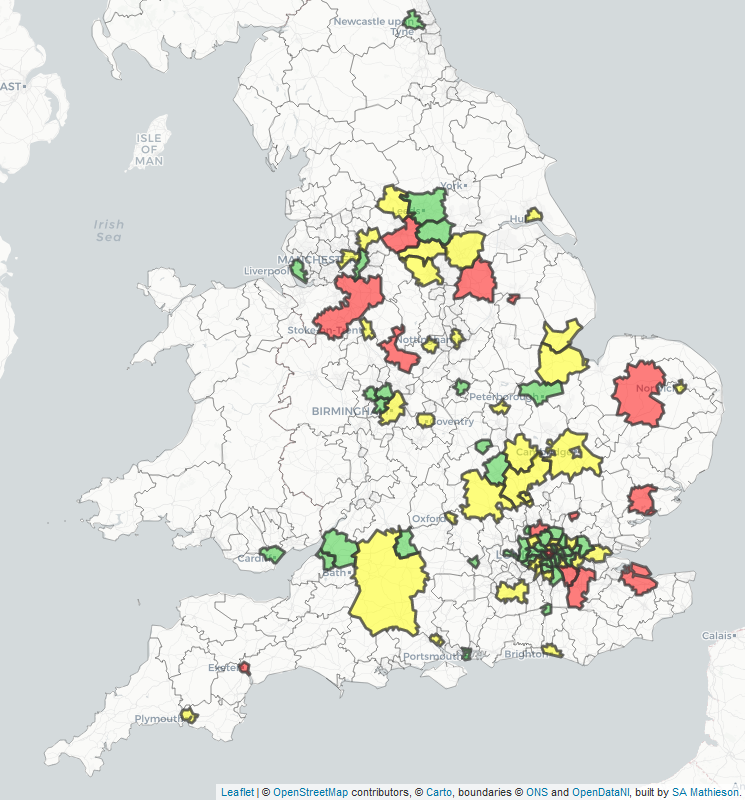It would be nice if all data was easily comparable and highly accurate, but it’s not. Office for National Statistics numbers on nationality of people in local authority areas are rounded to the nearest thousand to reflect the fact they are survey-based estimates. The ONS recently pointed out a range of problems involved in comparing this dataset to Home Office data on applications to the EU Settlement Scheme.
I still made these comparisons for PublicTechnology, because the differences between areas are huge. Excluding Irish citizens (who generally don’t need to apply to stay in the UK post-Brexit), the number of applications to the EU Settlement Scheme is equivalent to about three-quarters of 3.6 million European citizens in the UK. But for Bassetlaw in Nottinghamshire and Sevenoaks in Kent, it is around one-quarter.
The ratio is below half for 15 areas of England and Wales that have at least 10,000 non-Irish Europeans, in red on the above map (yellow areas have a ratio of half to three-quarters, green above three-quarters). Many are rural areas or small cities surrounded by countryside such as Lincoln and Exeter, although the list also includes Bromley and Westminster.
The EU Settlement Scheme is a digitally-focused service through which more than 3.1 million people have applied to settle in the UK. This data suggests it could be a lot harder to reach the final half-million. Campaign group the3million is calling for localised support – and this data supports it.
This has also been published through my monthly newsletter. Sign up below.

